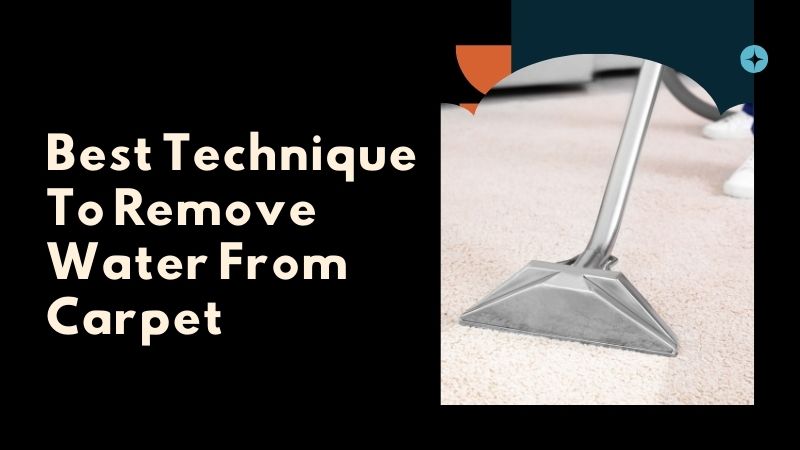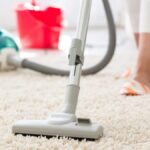Water damage can be a homeowner’s greatest fear, particularly for carpets. Whether caused by a leaking washing machine, an overflowing sink, or a natural disaster, prompt action is required to avoid mold growth and costly repairs. In this tutorial, we’ll talk about the **best technique to remove water from carpet** in basements and other areas, so your home stays safe and dry.
Steps for Removing Water from Carpet
1. Stop the flow of water
Before you begin the best technique to remove water from carpet, turn off the water at the source. If the water is near electrical outlets or appliances, turn off the power to avoid shock. To avoid further damage, address any leaks or overflows immediately.
2. Establish a Safe Work Environment
To ensure your safety, remove any furnishings from the affected area. This improves airflow and reduces the chance of mold growth. If the humidity is high, open windows and doors to allow for ventilation, or use an air conditioner.
3. Use a Wet-Dry Vacuum
A wet-dry vacuum is one of the most effective tools for water removal. Follow these steps for optimal results:
- Set the Vacuum to Wet Mode: Adjust the vacuum to ensure maximum water extraction.
- Make Multiple Passes: Move the vacuum slowly over the carpet, pressing down firmly to extract as much water as possible.
- Empty the Tank Frequently: If you encounter a large volume of water, empty the tank often to maintain suction power.
4. Pat dry the carpet
After extracting as much water as possible, use white towels to pat dry the carpet. Replace wet towels with dry ones until the carpet feels less moist.
5. Examine the Carpet Padding
Water can soak into the carpet padding, therefore it’s important to check for wetness. Here’s how.
- Lift the Carpet Edges: Inspect the padding underneath; if it’s wet, you may need to replace it.
- Use a Moisture Meter: This tool can help determine the moisture level in the carpet and padding.
If the padding is excessively wet, removing and replacing it is advisable to prevent mold growth.
6. Increase airflow using fans and dehumidifiers
Running fans for 24 to 48 hours can considerably improve drying. Box or blower fans placed strategically can improve airflow. Using a dehumidifier also helps to eliminate excess moisture from the air, preventing future problems.
7. Deodorize the Carpet
After the carpet has dried, sprinkle baking soda over it. Allow it to sit for a few hours to absorb any remaining odors before cleaning it.
Special Considerations for Basement Carpet
Basements are particularly susceptible to flooding, especially during heavy rain. Here’s the best way to remove water from carpet in your basement:
- Disconnect Electrical Power: Ensure safety by turning off power to the basement.
- Address the Water Source: Resolve any leaks before beginning the removal process.
- Use the Same Extraction Methods: Follow the steps outlined above, focusing on thorough extraction and drying.
Conclusion:
Prompt action is the best technique to remove water from carpet and avoid further damage. Following these measures will allow you to properly manage water damage while also protecting your house from mold and structural hazards.
FAQs
How long does it take for carpet to dry after water removal?
Carpet drying time can range from a few hours to several days, depending on the amount of water and ventilation.
Can an ordinary vacuum take water from carpet?
No, regular vacuums are not designed to extract water. A wet-dry vacuum is required to securely remove water from carpets.







Leave a Reply